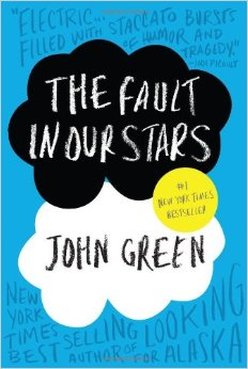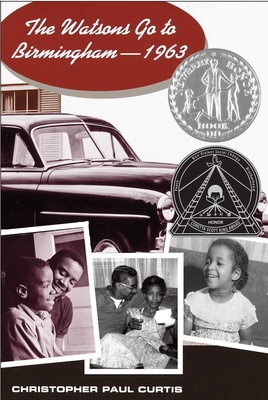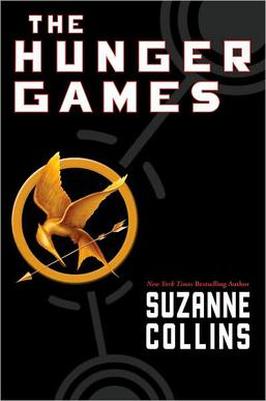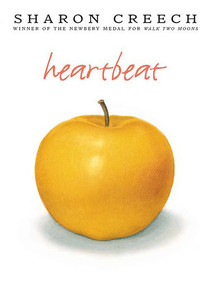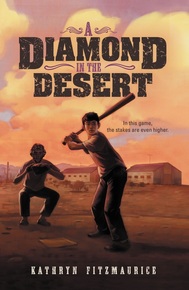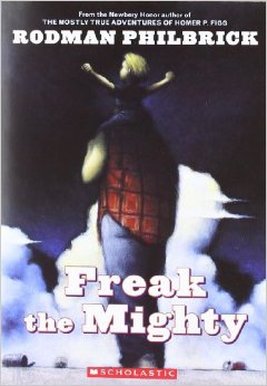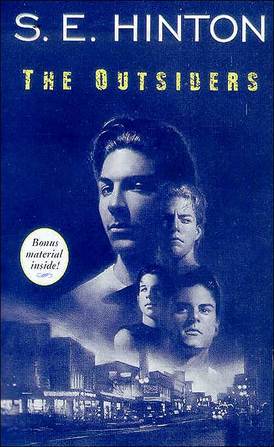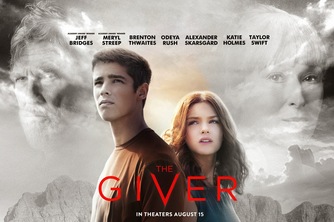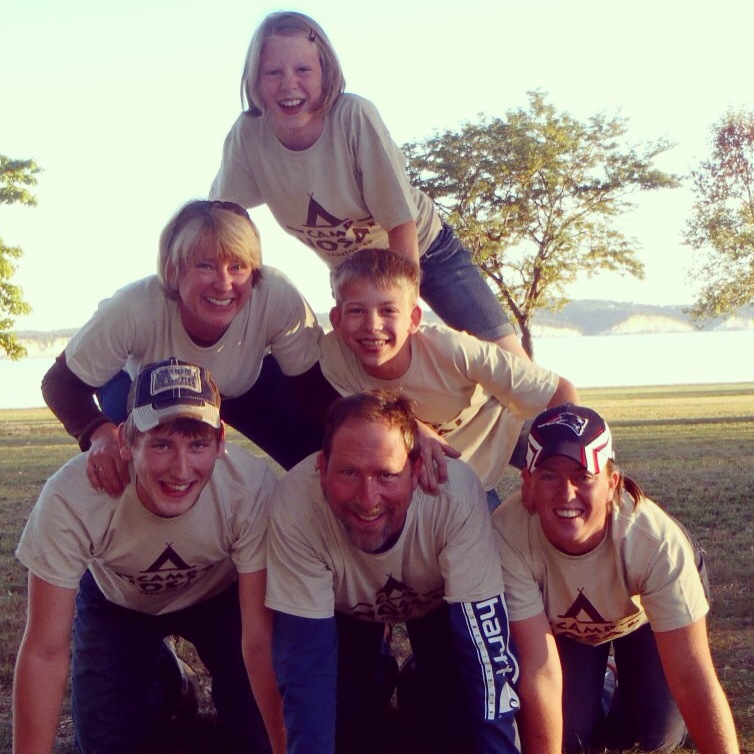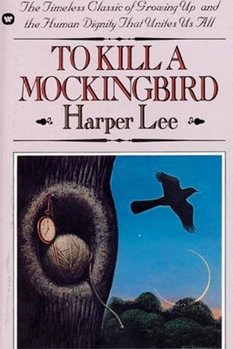
Book: Harper Lee. To Kill a Mockingbird. New York: Harper Collins Publishers, 1995.
Awards:
Summary: In a small Southern town during the Depression, Scout Finch lives with her brother Jem and her father Atticus. Atticus is an attorney who risks everything to defend a black man wrongly accused of raping a white woman. This book deals with issues like like racism, social injustice, and tolerance of other points of view. It is has plenty of humor, warmth, and timeless hometown wisdom. This book is definitely an American classic.
Audience: I would read this book with students grades 9 through 12.
Themes: One of this book's major themes is equality. Throughout the novel, Atticus fights for a black man because he has been accused of raping a white woman. A large part of this wrong accusation has to do with his race and her race. This would be an important theme to discuss with students - especially with the current events going on in the news right now. Students can compare and contrast the times during the Depression with today.
Another major theme in this book is friendship. Scout is a relateable character for some students so this theme would be a great one to talk about. Relating the events/characteristics of Scout will help students understand the story better.
Evidence:
“You never really understand a person until you consider things from his point of view... Until you climb inside of his skin and walk around in it.”
This is an important quote because no one really knows the truth about what happened in the legal case. Most people pass judgement and make assumptions but those are not based off facts.
“Atticus, he was real nice."
"Most people are, Scout, when you finally see them.”
I love this quote. It really sheds light on their family and how they are different than the majority of white families during this time.
Connections: I remember reading this book in high school and my teacher collaborated with the history teacher because there are some great historical opportunities to learn about. I would do something similar as a teacher. Students will be more interested in this book if they know all the background knowledge behind the story.
Reactions: I read this book for the first time in high school and I have loved it since then. I think it is an amazing story and has many great lessons. I think this is definitely an American classic that all high school students should read. I enjoyed the movie as well but the book is fantastic. I couldn't put it down!
Reception:
"I read this book when I was 11-12. I know that it's known as a mature book that grown-ups read, but I've read it at least 16 times. I've done 2 projects on it and have written 6 book reports/reviews on it. It's one of my favorite books and though it may seem confusing at first it's really inspirational. There are MANY famous quotes and is a gives great morals. The only concern a parent should have is the accusation in the Tom Robinson case. Other than that, mature young readers should give it a go."
"I was twelve when I read it...I should have waited a year, actually, but it wasn't a big deal, except I don't think I got as much out of it as I would have later. Violence: a lynch mob, and Tom Robinson gets shot at the end. Sex: Tom Robinson is accused of rape (he didn't do it), which is described in the courtroom; the way I read it, I think it implied that Mayella's father may have raped her. Language: well, they do use the n word, but it's clear that that's bad, so I don't feel like that was a problem. Drugs: there's a part where a woman's withdrawl from morphine is graphically described. Educational: tells about the 1930s South. Good role models: Atticus Finch. Overall, it was very good and educational, but you should wait until you're a teenager to read it."
Hyperlinks:
Scholastic
Author Page
Guide
Awards:
- Pulitzer Prize - 1961
- Brotherhood Award of the National Conference of Christians and Jews
- Paperback of the Year - 1962
- Alabama Library Association Award
Summary: In a small Southern town during the Depression, Scout Finch lives with her brother Jem and her father Atticus. Atticus is an attorney who risks everything to defend a black man wrongly accused of raping a white woman. This book deals with issues like like racism, social injustice, and tolerance of other points of view. It is has plenty of humor, warmth, and timeless hometown wisdom. This book is definitely an American classic.
Audience: I would read this book with students grades 9 through 12.
Themes: One of this book's major themes is equality. Throughout the novel, Atticus fights for a black man because he has been accused of raping a white woman. A large part of this wrong accusation has to do with his race and her race. This would be an important theme to discuss with students - especially with the current events going on in the news right now. Students can compare and contrast the times during the Depression with today.
Another major theme in this book is friendship. Scout is a relateable character for some students so this theme would be a great one to talk about. Relating the events/characteristics of Scout will help students understand the story better.
Evidence:
“You never really understand a person until you consider things from his point of view... Until you climb inside of his skin and walk around in it.”
This is an important quote because no one really knows the truth about what happened in the legal case. Most people pass judgement and make assumptions but those are not based off facts.
“Atticus, he was real nice."
"Most people are, Scout, when you finally see them.”
I love this quote. It really sheds light on their family and how they are different than the majority of white families during this time.
Connections: I remember reading this book in high school and my teacher collaborated with the history teacher because there are some great historical opportunities to learn about. I would do something similar as a teacher. Students will be more interested in this book if they know all the background knowledge behind the story.
Reactions: I read this book for the first time in high school and I have loved it since then. I think it is an amazing story and has many great lessons. I think this is definitely an American classic that all high school students should read. I enjoyed the movie as well but the book is fantastic. I couldn't put it down!
Reception:
"I read this book when I was 11-12. I know that it's known as a mature book that grown-ups read, but I've read it at least 16 times. I've done 2 projects on it and have written 6 book reports/reviews on it. It's one of my favorite books and though it may seem confusing at first it's really inspirational. There are MANY famous quotes and is a gives great morals. The only concern a parent should have is the accusation in the Tom Robinson case. Other than that, mature young readers should give it a go."
"I was twelve when I read it...I should have waited a year, actually, but it wasn't a big deal, except I don't think I got as much out of it as I would have later. Violence: a lynch mob, and Tom Robinson gets shot at the end. Sex: Tom Robinson is accused of rape (he didn't do it), which is described in the courtroom; the way I read it, I think it implied that Mayella's father may have raped her. Language: well, they do use the n word, but it's clear that that's bad, so I don't feel like that was a problem. Drugs: there's a part where a woman's withdrawl from morphine is graphically described. Educational: tells about the 1930s South. Good role models: Atticus Finch. Overall, it was very good and educational, but you should wait until you're a teenager to read it."
Hyperlinks:
Scholastic
Author Page
Guide
